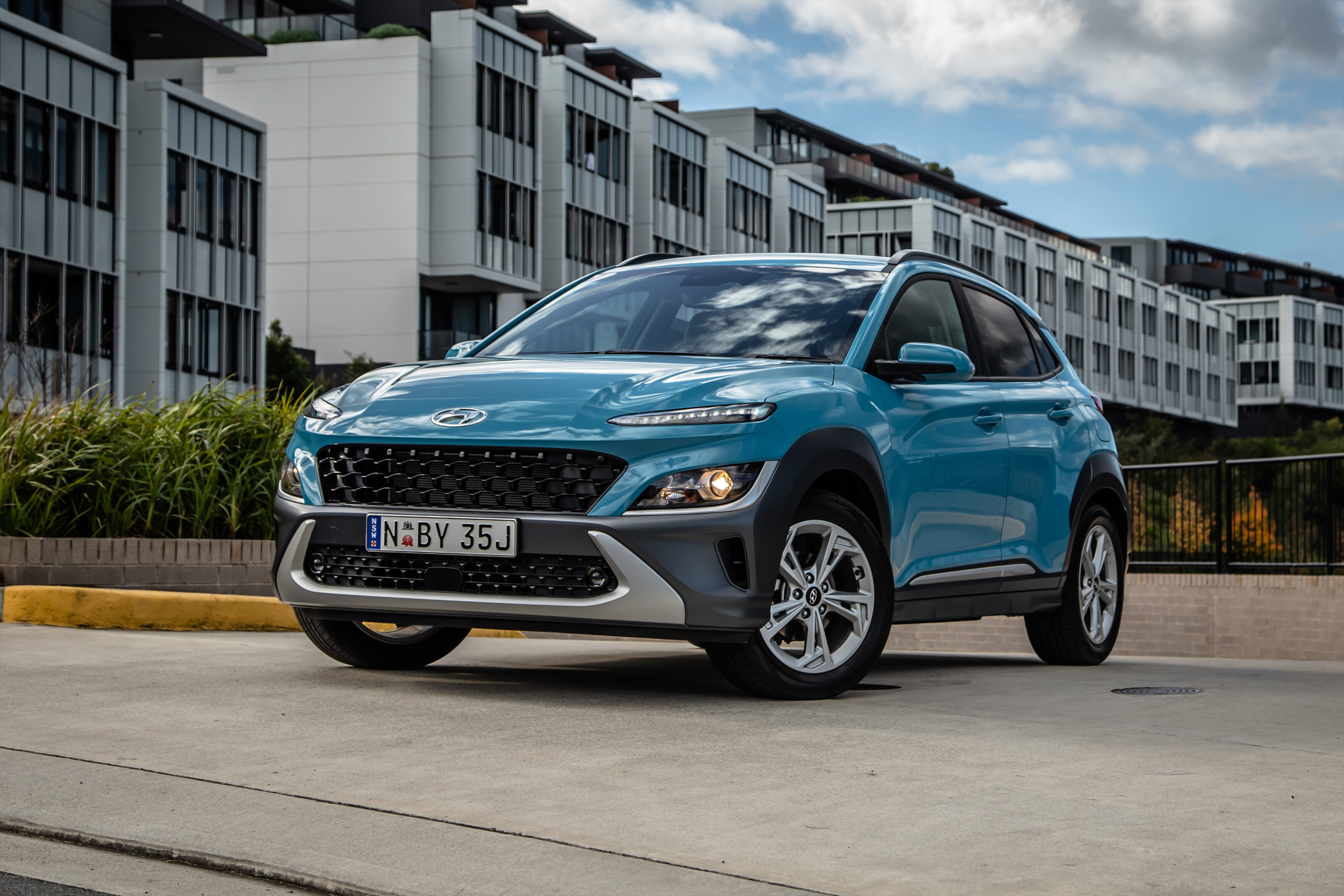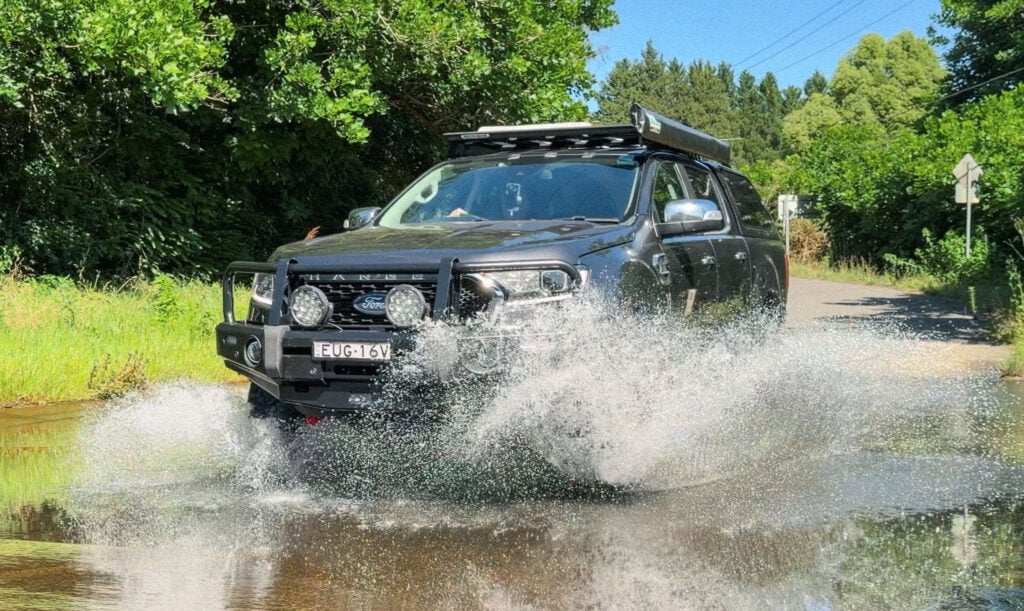Score breakdown
Things we like
- New look
- Good specification
- Drives very well
Not so much
- Lack of hybrid options
- Needs more LED, less halogen
- Lack of wireless Apple CarPlay
One of the reasons I don’t want to be a product planner when I grow up is partly because it’s unlikely I’ll ever grow up, but mostly because things like the compact SUV segment would preclude me from sleep and having fingernails. It’s hard enough for buyers to make sense of the twenty-odd (and growing) choices stacked into the $25,000-$35,000 price bracket, deal with options from Europe, Japan, the US, China and Korea and unpick all the different after-sales packages and various value for money considerations.
A product planner has to figure out how to make a range that stands out from the rest while also hoping that you won’t ask too many questions about cars that look different but have suspiciously similar mechanical packages. The Kona and the Kia Seltos are very similar underneath and share a lot of features – down to the same touchscreen in the cabin. That’s a layer of complication that would finish off my sanity.
The Kona, however, is smaller and older than the Seltos, so has to make do with a facelift to keep pace with its compatriot rival. And with newcomers on the way all the time, the facelift will want to be worthwhile.
Pricing and Features
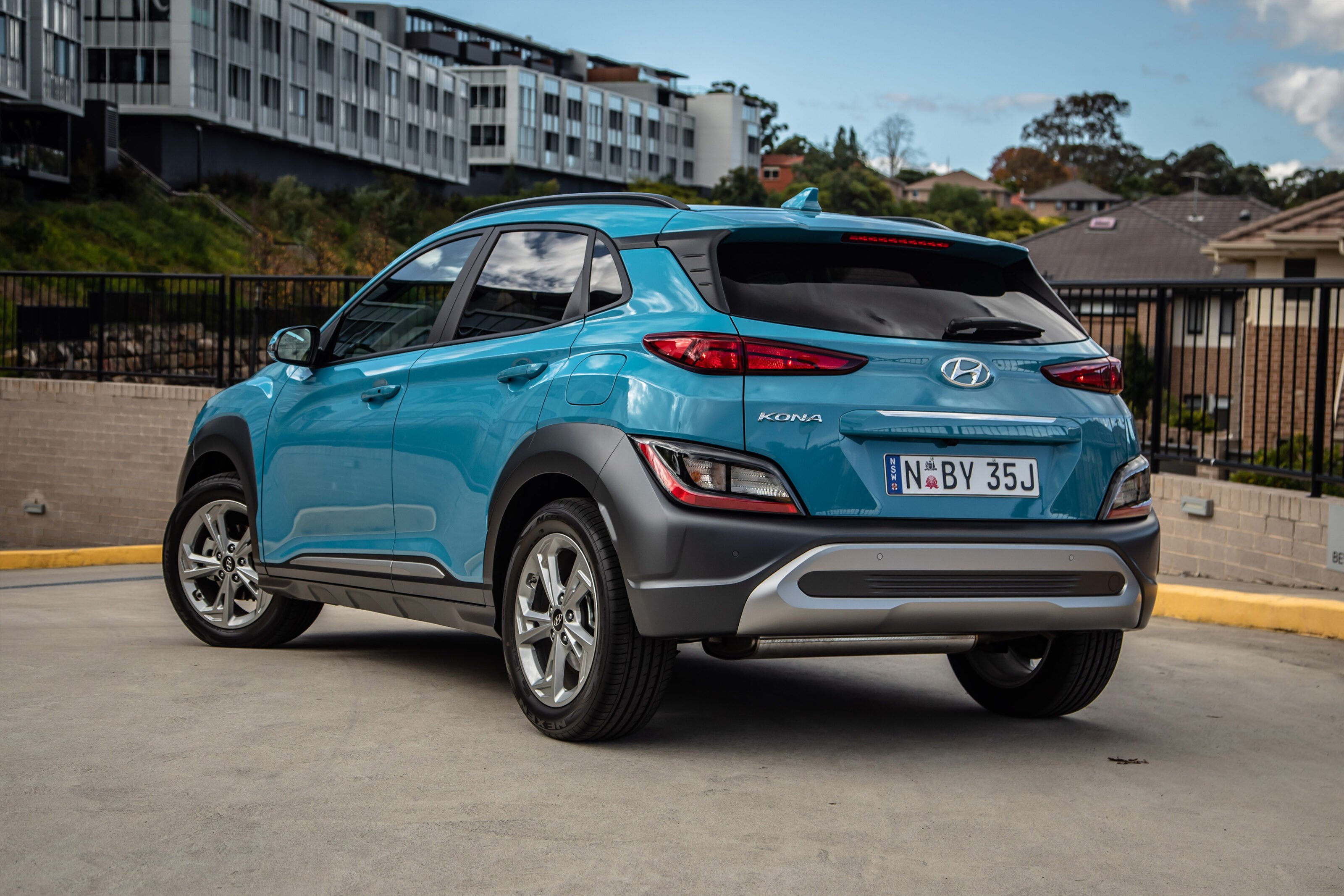
The $31,600 (before on-road costs) Elite clocks in at an attention-grabbing $3400 more than the model beneath it, the Active and nearly five grand more than the entry level machine. With 17-inch alloys, an eight-speaker stereo, climate control, reversing camera, keyless entry and start, acoustic windscreen, rear parking sensors, cruise control, sat nav, auto wipers and LED daytime running lights, you’re not going without, though.
Actually, you are – at this level, it’s not unreasonable to expect LED headlights. Product planners also have to put up with this kind of sledging, too.
The eight-speaker stereo has Harmon/Kardon badges all over it, so one hopes these are eight of the better speakers you’d find in a car. Part of the model refresh has seen the installation of the larger 10.25-inch media screen, which is a genuine cracker of a unit backed by excellent software. Despite a wireless Qi charger, the baffling exclusion of wireless connectivity for Apple CarPlay and Android Auto continues, but you can use the USB ports to charge and connect.

All Konas (Konae?) have six airbags, forward collision warning and lane-keep assist, lane-following assist, rear occupant alert and reversing camera as standard. The Elite adds blind-spot warning, rear cross-traffic alert and safe-exit warning.
The AEB recognises cars, pedestrians and cyclists and works at low and high speeds.
Baby and child seats are fixed in place either via two ISOFIX points or three top-tether anchor points.
The Kona scored five ANCAP stars in 2017.
Part of the model refresh has seen the installation of the larger 10.25-inch media screen, which is a genuine cracker of a unit backed by excellent software.
Comfort and Space

Despite the facelift adding some length to the Kona, none of it is in the cabin, so it’s still a comfortable if not luxurious four-seater, with a fifth-in-a-pinch vibe. The front seats don’t look like much but they’re very comfortable, if a bit slippy in synthetic leather. I personally prefer the cloth trim of the Active, but there you are.
You get a pair of cupholders, wireless charging, bottle holders in the doors and a slot next to the cupholders where you could probably put another phone. The central armrest covers a handy console bin.
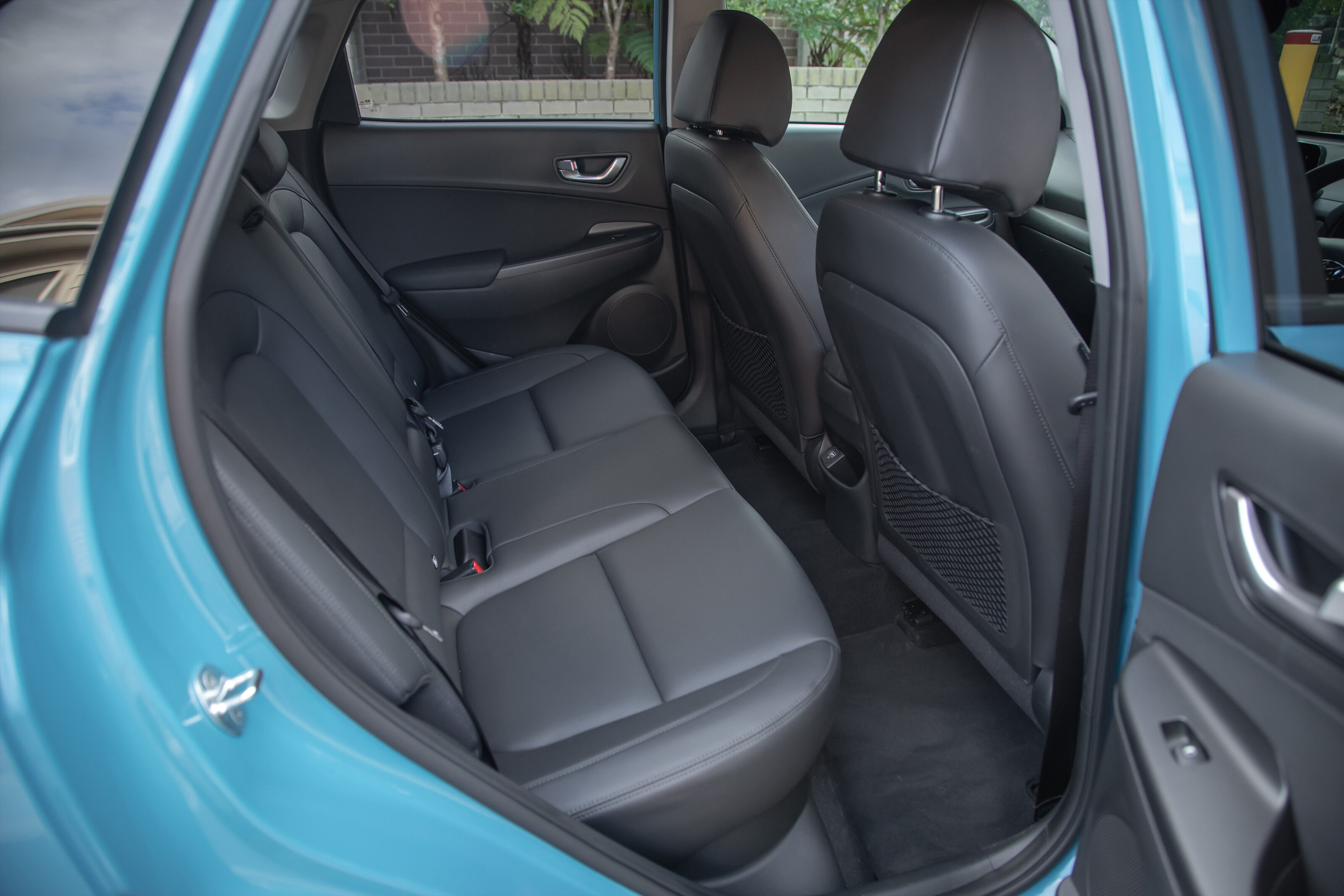
Rear-seat passengers score small bottle holders in the doors, an armrest and therefore a pair of cupholders. There’s a weird little storage cubby in the back of the centre console, a 12-volt outlet and no rear air vents. Leg and headroom are good if not spacious and three across the back is not recommended for anyone over about 12.
The boot is now among the smallest in the class (but still way bigger than the Mazda CX-3’s) at 374 litres with the seats in place and 1156 litres with both sections folded down. That’s a little more than before, presumably courtesy of some re-shaped mouldings and other changes to the space.
On the Road

The facelifted Kona came with a big change in the drivetrain. Well, half of it anyway. As ever, it’s a 2.0-litre naturally aspirated four-cylinder engine with 110kW at 6200rpm and 180Nm at 4500rpm. Both of which are around what seem to be legislated figures for cars of this type.
What has changed is the transmission. Atmo Konas used to have a six-speed torque converter automatic transmission that did a fine job, thanks very much, but now they have the CVT first seen in the Seltos. On paper, it’s a backwards step, but as in the Kia, it’s not bad at all.
I can’t stand CVTs generally, but this one is quite good, with eight virtual gears and you only get the nasty roaring when you plant your foot and the transmission heads up to the peak power figure to give you what it thinks you want. Of course, with just 110kW to play with and almost 1400kg to move, what you want and what you get are two different things.

That kind of performance is perfectly fine around town and the suburbs, which the Kona always has been. Given it’s a high-riding i30, it handles the lumps, bumps and bottomless potholes of Sydney suburbia with consummate professionalism, the extra travel soaking up more of the ugliness.
It still has a handy chassis, too, with light but mildly chatty steering and a good turn-in and keen change of direction, especially useful in car parks and narrow streets. I’ve always quite liked throwing a Kona into a corner and the only time you feel that the rear end is by torsion beams rather than the higher models’ multi-link arrangement is over sharp bumps.
Given it’s a high-riding i30, it handles the lumps, bumps and bottomless potholes of Sydney suburbia with consummate professionalism.
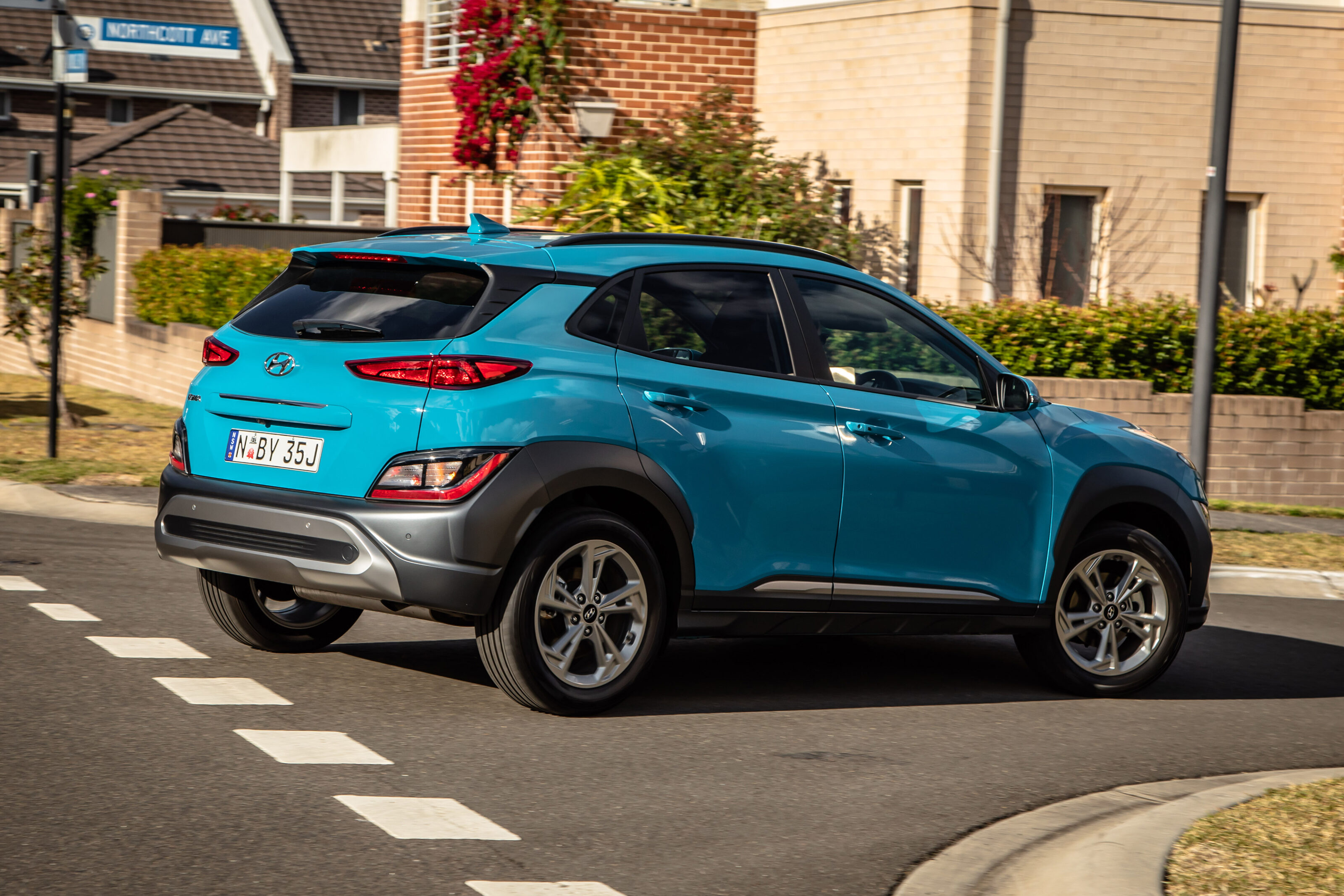
Stretching its legs on the freeway, it is very quiet and while overtaking requires some forward thinking, it’s no worse than anything else in the segment that doesn’t have a higher-powered turbo engine. It’s more responsive than a C-HR, HR-V or ASX.
Hyundai’s official combined-cycle fuel figure is a thrifty 6.2L/100km, a decent gain on the old car’s 7.2L/100km. My week with the Kona saw mostly suburban duty with a highway run thrown in and an indicated 6.9L/100km number. I think you can credit the CVT for most of the improvement, along with the usual unsung running changes to the engine.
Ownership
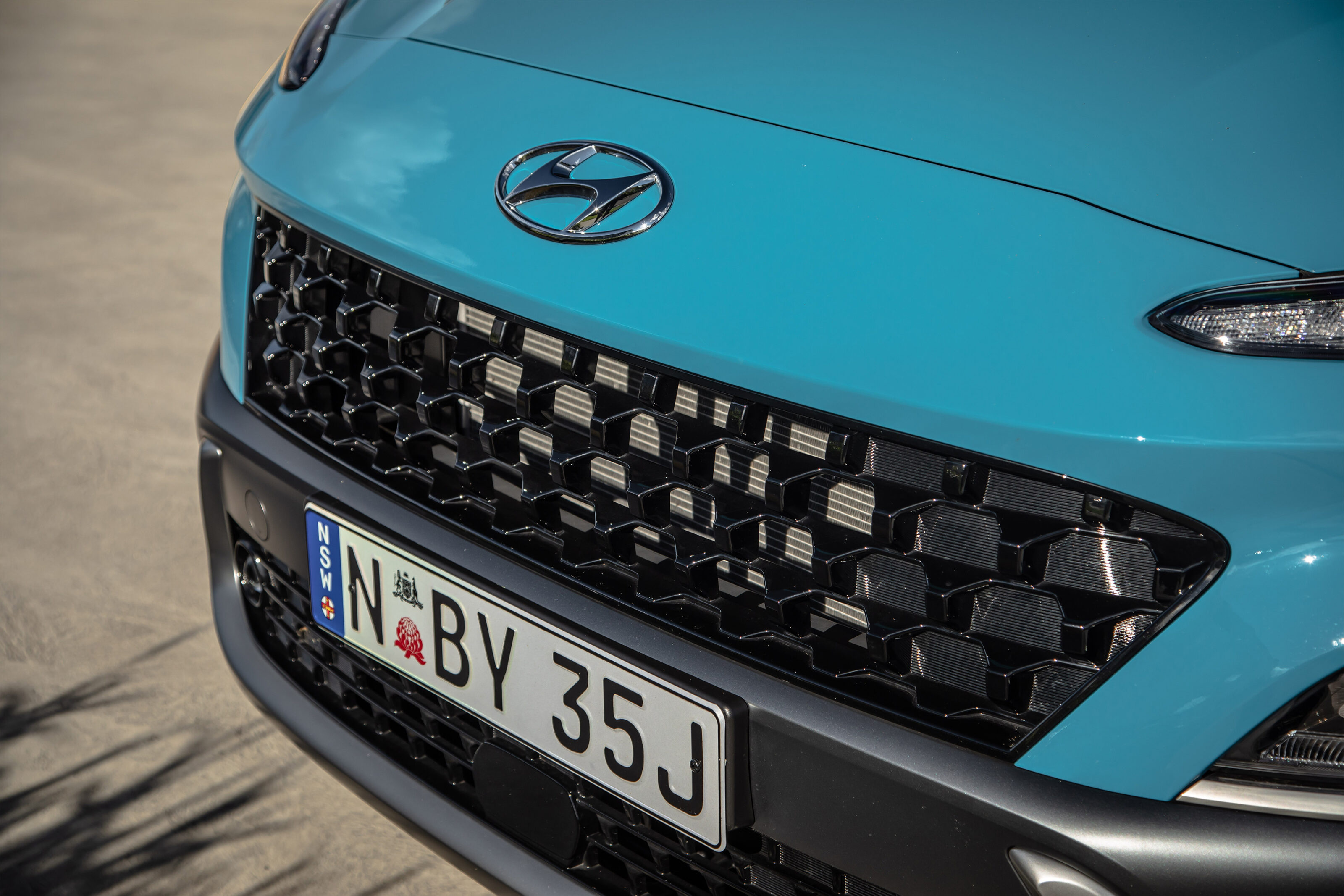
All Hyundais have a five-year/unlimited-kilometre warranty and a lifetime capped-price-servicing plan.
You can prepay your servicing at the time of purchase, meaning you can also roll it into your finance package. A three-service plan costs $957, four for $1276 and five for $1595. Servicing comes around every 12 months or 15,000km, which is 5000 more kilometres than the turbo-engined N-Line, Highlander and Premium spec Konas.
VERDICT
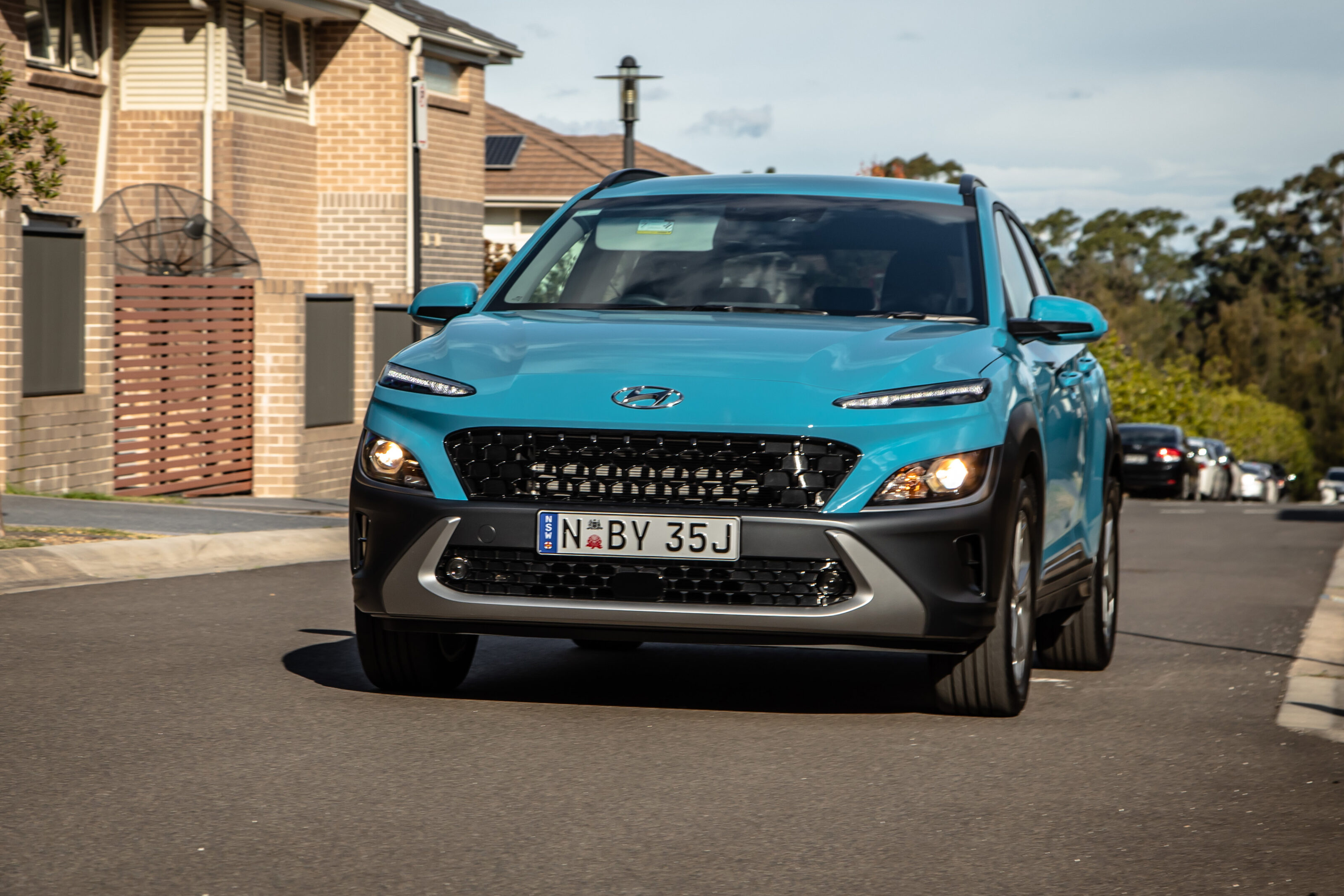
I reckon the Elite is the pick of the non-turbo cars. Go down the range and you lose some useful safety features, go up and it’s all sunroofs and convenience features. The only solid reason to spend another several thousand on a 2.0-litre Highlander is the LED headlight setup that should probably be on the Elite.
The Kona Elite is reasonable fun to drive, comes with a solid after-sales package and isn’t terribly expensive. A pat on the back for the product planners, then.
Thing is, all it has to really stand out in a class full of contenders is the fashion-forward styling, ever-improving reputation and driving dynamics. That sounds like a lot – and a few years ago it would be a lot more – but now the Kona Elite is fading into the mid-pack. The Kona N-Line, though…that’s a different story.
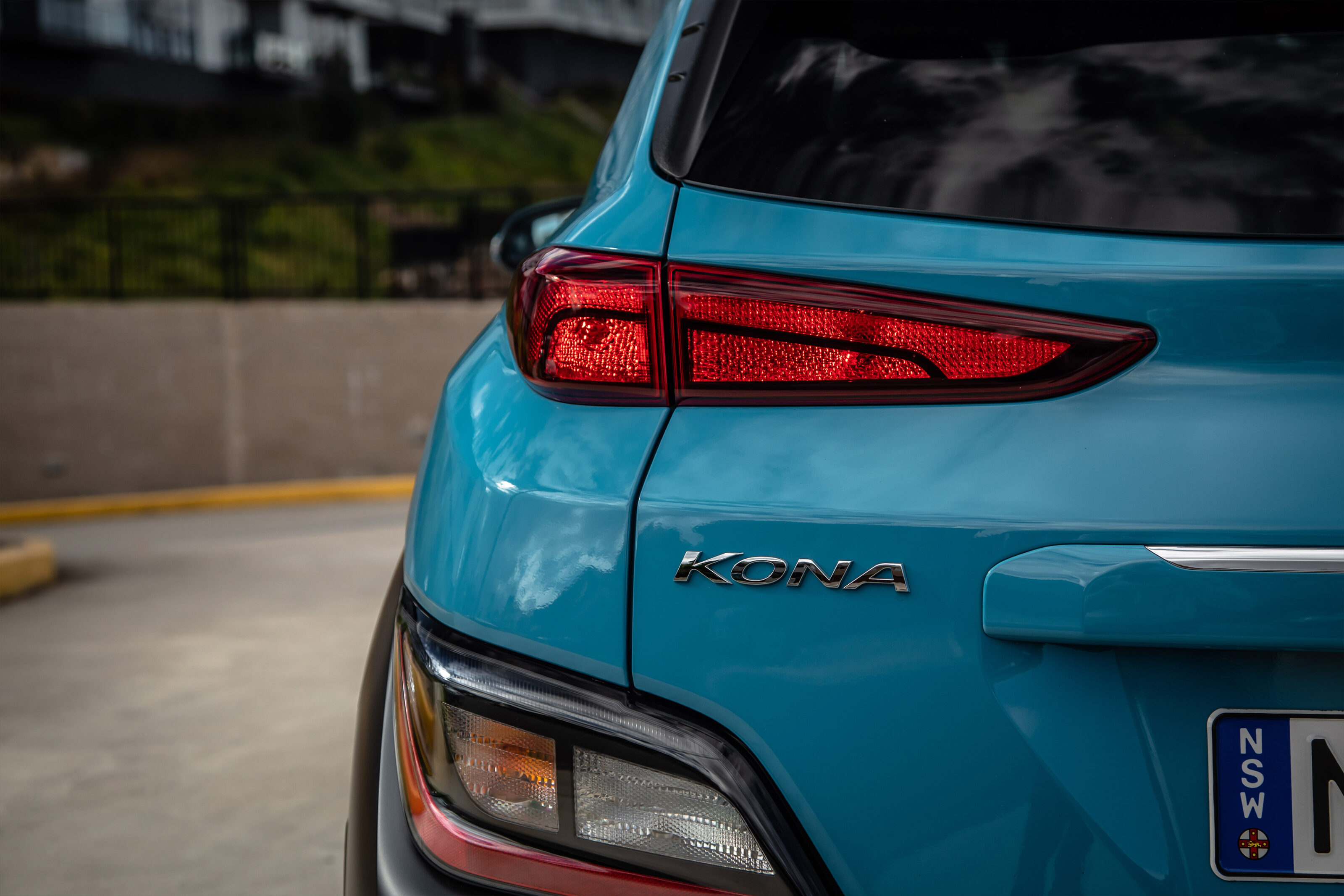
2021 Hyundai Kona Elite Specifications
| Body: | five-door compact SUV |
|---|---|
| Drive: | FWD |
| Engine: | 2.0-litre naturally aspirated four-cylinder |
| Transmission: | CVT |
| Power: | 110kW @ 6200rpm |
| Torque: | 180Nm @ 4500rpm |
| Bore stroke: | 81mm x 97mm |
| Compression ratio: | 12.5 : 1.0 |
| 0-100km/h: | 10sec (claimed) |
| Fuel consumption: | 6.2L/100km (combined) |
| Weight: | 1353kg |
| Suspension: | McPherson struts (front); torsion beam (rear) |
| L/W/H: | 4205/1800/1565mm |
| Wheelbase: | 2600mm |
| Brakes: | 280mm ventilated disc (front); 284mm solid disc (rear) |
| Tyres: | 215/55 Nexen NFera |
| Wheels: | 17-inch wheels (space-saver spare) |
| Price: | $31,600 + ORC |
Score breakdown
Things we like
- New look
- Good specification
- Drives very well
Not so much
- Lack of hybrid options
- Needs more LED, less halogen
- Lack of wireless Apple CarPlay


